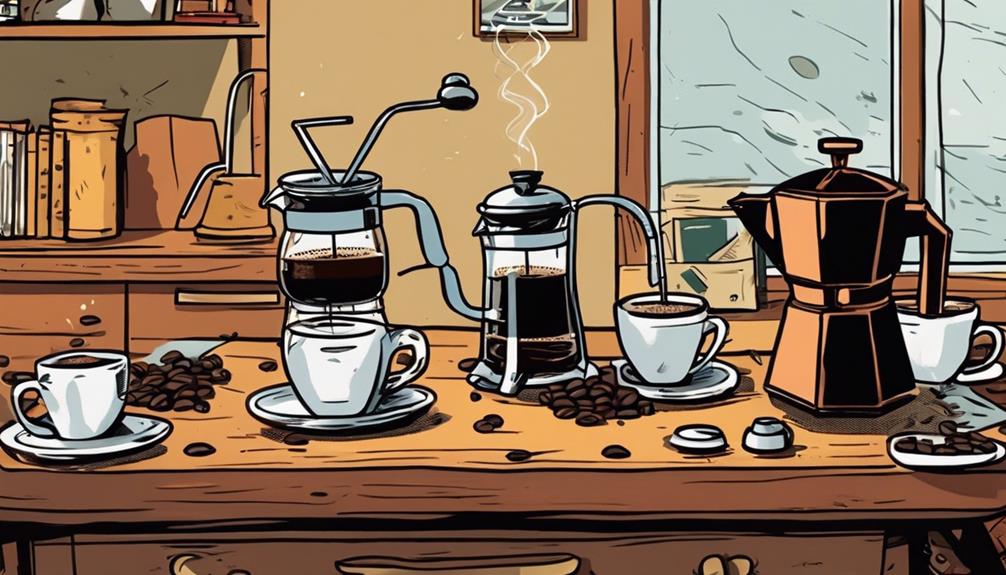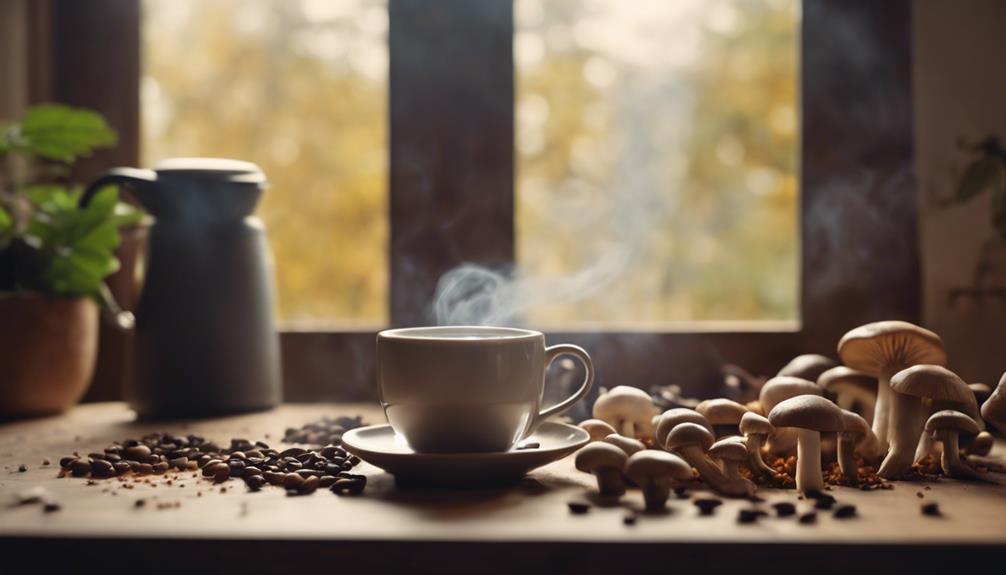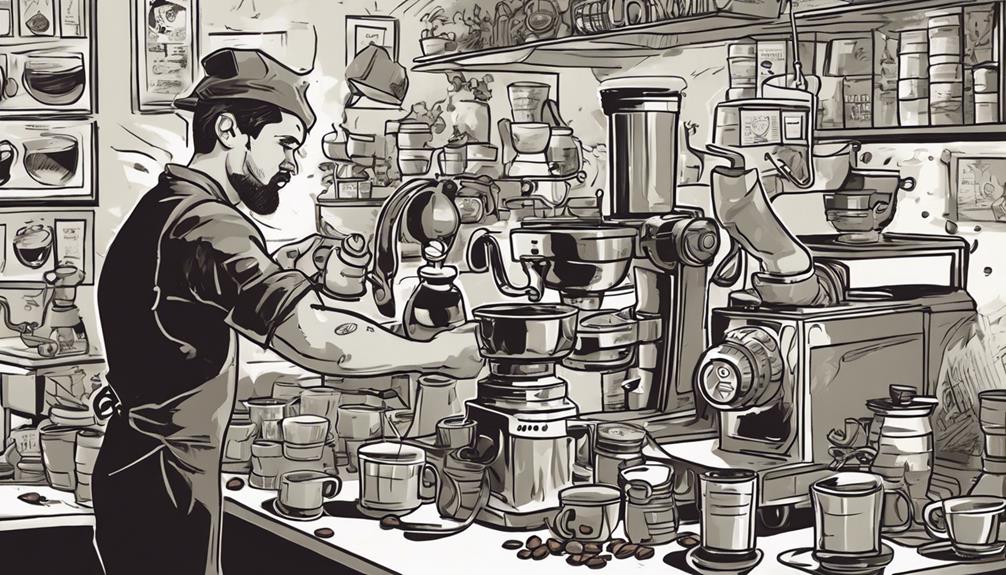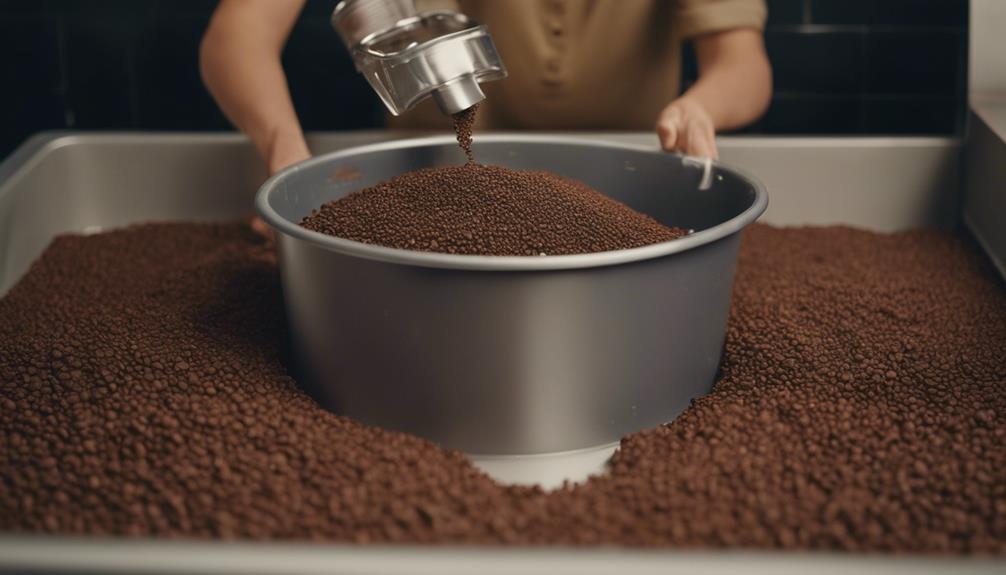Explore the realm of coffee brewing by trying out different types of beans, roasts, and techniques. From Arabica’s sweetness to Robusta’s boldness, each type offers a distinct flavor profile. Experiment with various coffee roasts like extra dark or light to elevate the taste and aroma. Delve into different brewing methods such as Espresso or Cold Brew to customize the strength and intensity. Whether you enjoy black coffee, milk-based beverages, iced options, or specialty choices, there is a perfect cup waiting for you. Unleash a range of flavors by immersing yourself in various coffee experiences. For those keen on delving into the world of Arabic coffee brewing tips, try experimenting with traditional methods like Turkish coffee or Dallah brewing. These techniques often involve using finely ground coffee beans and specific brewing methods to showcase the unique flavors of Arabica beans. By incorporating these tips into your coffee brewing routine, you can enhance your coffee experience and encounter a whole new world of rich, aromatic flavors.
Key Takeaways
- Brew Arabica beans for sweetness and acidity, Robusta for boldness, Liberica for fruity notes, and Excelsa for a tart taste.
- Adjust roast levels (dark, medium, light) to influence taste, aroma, acidity, and bitterness.
- Use specific brewing methods (Espresso, Drip, Cold Brew, Pour-over) for different flavor intensities.
- Experiment with water temperature variations to enhance or reduce flavors in different coffee types.
- Explore diverse coffee maker options (French Press, Aeropress, Espresso Machine, etc.) for unique brewing experiences.
Types of Coffee Beans
When brewing different types of coffee, the choice of coffee beans plays a pivotal role in determining the flavor profile of your brew. Arabica beans are favored for their sweet taste and higher acidity, commonly used in specialty and black coffee.
On the other hand, Robusta beans are known for their strong flavor and higher caffeine content, making them a popular choice for espresso blends and instant coffee.
Liberica beans offer unique fruity and floral flavors, adding diversity to coffee profiles, while Excelsa beans provide a tart, fruit-like taste that contributes to complex and rich coffee blends.
Coffee Roast Varieties
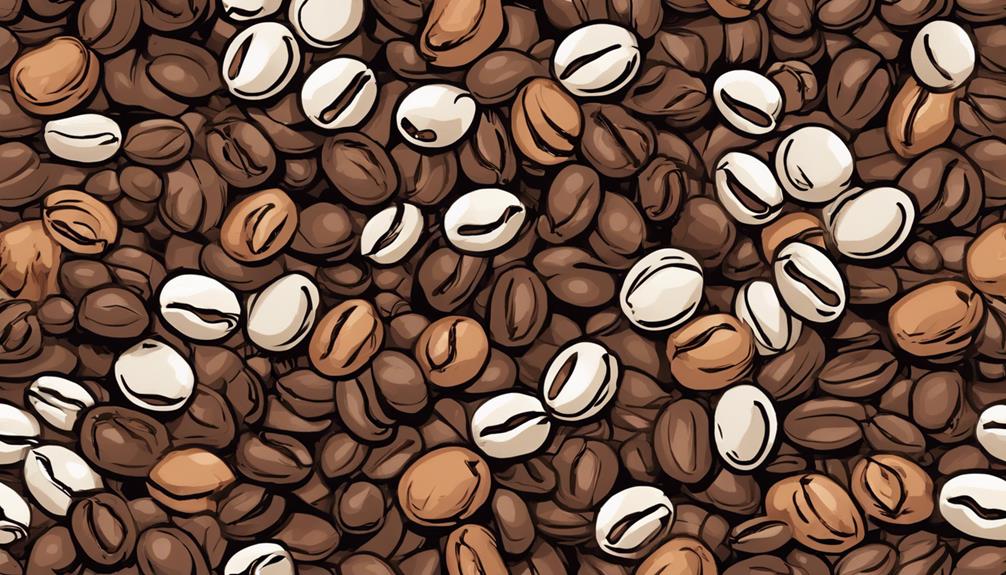
Exploring the world of coffee roast varieties reveals a spectrum of flavors that cater to different preferences and palates. Coffee comes in various roast types, including extra dark, dark, medium, and light roasts, each offering unique flavor profiles. For example, extra dark roasts are characterized by bold and robust flavors, while light roasts showcase more delicate and acidic notes. As you explore the world of coffee roasts, you’ll develop a deeper understanding of the nuances in flavor and aroma. With dedication and practice, you can become an expert coffee taster, able to discern the subtleties in different roast varieties and appreciate the full spectrum of coffee flavors.
The roast level significantly impacts the taste, aroma, acidity, and bitterness of the coffee beans. Extra dark roasts are known for their intense, bold flavor with a pronounced bitterness, making them ideal for those who enjoy a robust cup of coffee.
On the other end of the spectrum, light roasts maintain the original flavors of the beans, showcasing higher acidity and brightness, appealing to those who prefer a more delicate and fruity taste.
Medium roasts strike a balance between the boldness of dark roasts and the acidity of light roasts, making them a popular choice for many coffee enthusiasts looking for a harmonious blend of flavors.
Choose your roast wisely to savor the diverse aromas and tastes that coffee has to offer.
Coffee Brewing Methods
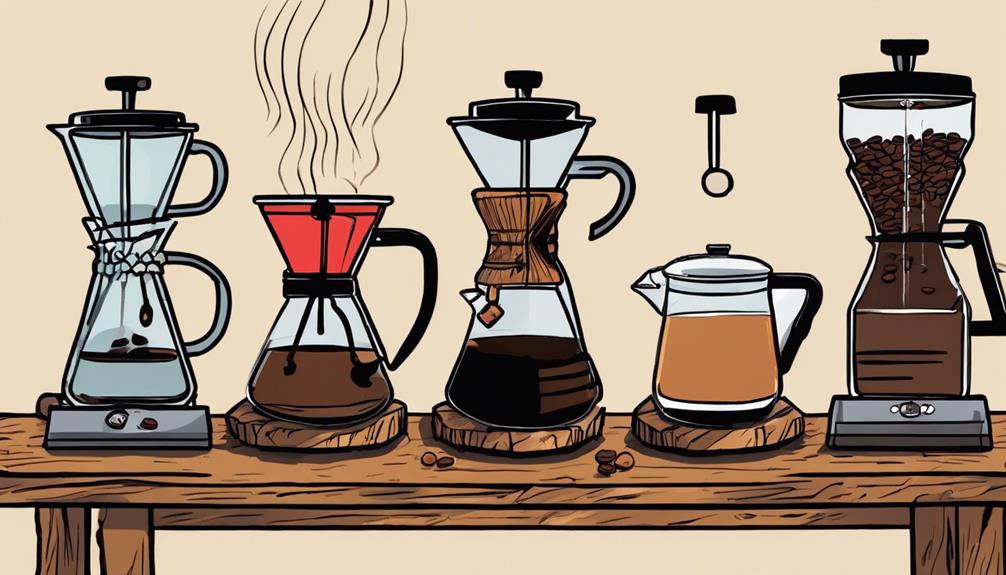
Let's talk about brew ratios and water temperature in different coffee brewing methods. Understanding the right balance between coffee grounds and water is essential to achieving your desired strength and flavor.
Temperature plays a vital role in extracting the best flavors from your coffee beans.
Brew Ratios
Understanding the brew ratios is essential for achieving the desired strength and flavor in various coffee brewing methods.
When it comes to espresso, a common brew ratio is 1:2, meaning 1 part coffee to 2 parts water, resulting in a concentrated and bold flavor.
Drip coffee makers, on the other hand, typically use a brew ratio of 1:15, where 1 gram of coffee is used for every 15 grams of water, providing a milder taste.
Cold brew coffee requires a higher brew ratio of around 1:8 to 1:10 due to its extended steeping process, resulting in a smooth and less acidic brew.
Pour-over coffee enthusiasts often follow a brew ratio of 1:16, which helps achieve a balanced and nuanced flavor profile.
Adjusting the brew ratio can significantly impact the strength, body, and flavor intensity of your coffee, allowing you to tailor your brew to your preferences.
Water Temperature
Maintaining the perfect water temperature is vital for extracting the finest flavor in various coffee brewing methods. The ideal brewing temperature for coffee falls within the range of 195-205°F. This specific range is pivotal as water temperature plays a significant role in determining the balance between acidity and bitterness in your cup.
If the water temperature is too low, below 195°F, it can result in under-extraction, leading to a weak and underdeveloped flavor profile. Conversely, if the water is too hot, above 205°F, over-extraction may occur, causing a bitter and harsh taste in your coffee.
To brew a delicious and well-balanced cup, consistency in controlling the water temperature is key. By maintaining the recommended brewing temperature, you can guarantee that your coffee achieves peak flavor without leaning towards excessive bitterness or acidity. Remember, the right water temperature is fundamental in optimizing the full potential of your coffee beans.
Black Coffee Options
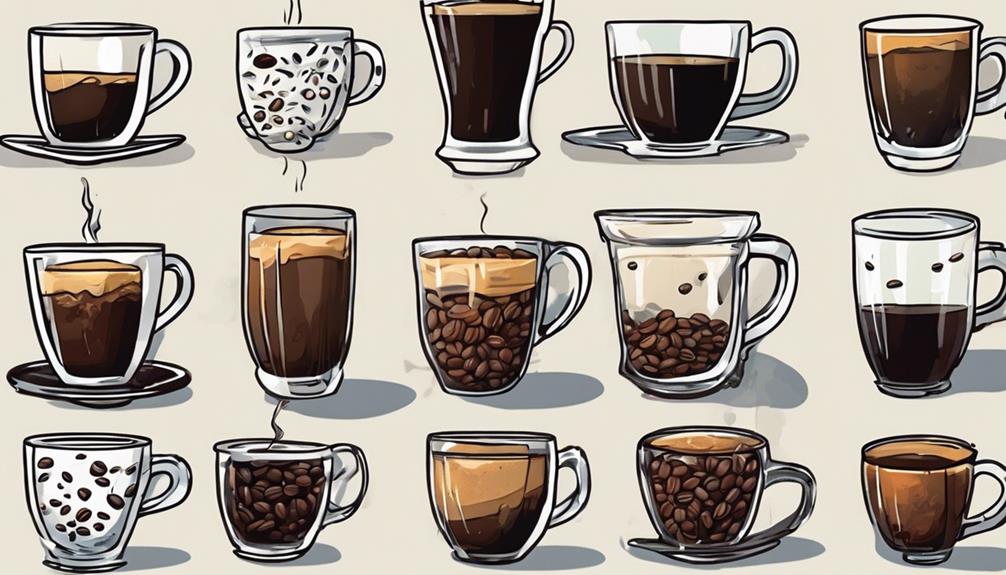
Exploring black coffee options uncovers a range of bold and pure brews, perfect for those seeking a straightforward coffee experience without added milk or sugar. When delving into the world of black coffee, you'll encounter:
- Espresso: This classic black coffee is renowned for its intense flavor and rich crema.
- Long Black: By adding hot water to a double shot of espresso, the long black coffee offers a slightly different take on the boldness of espresso.
- Pure Coffee Experience: Both espresso and long black are favored by those looking for a strong coffee that showcases the natural flavors and aromas of the beans.
- Simplicity: Black coffee varieties provide a simple yet satisfying coffee experience, free from any added ingredients.
- Boldness: Black coffee drinkers appreciate the robust and uncomplicated taste profiles that these brews offer.
Espresso Brewing Techniques
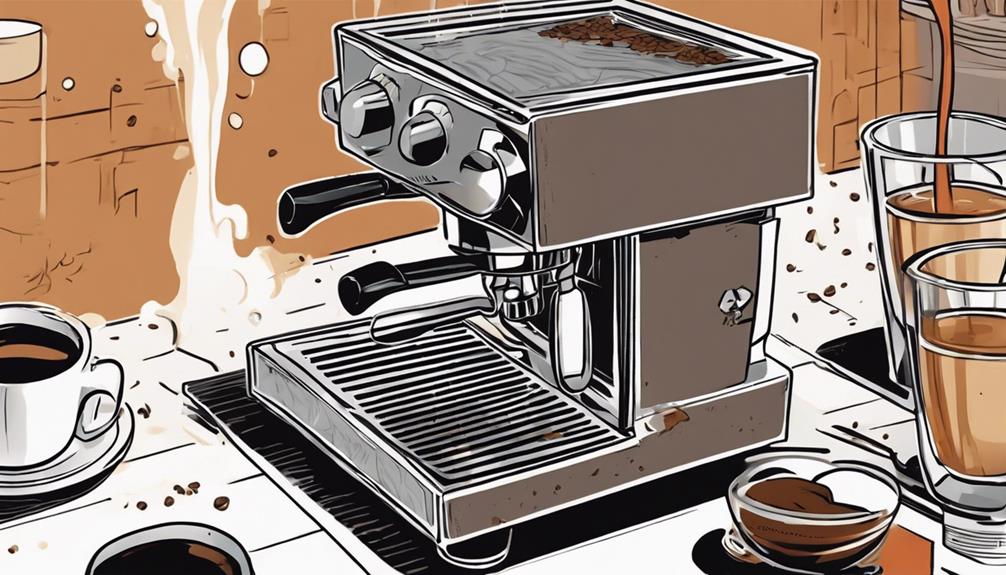
To achieve a perfect espresso shot, start by selecting a fine grind setting for best flavor extraction. The grind size is essential in brewing espresso as it allows for ideal extraction of flavors.
When using an espresso maker, make sure the grind is fine and consistent to prevent under or over-extraction. Additionally, pay attention to the brew time and shot times. Shot times should ideally be under 35 seconds to avoid bitterness, but this can vary based on personal preference and the coffee beans used.
Dosing is another key factor in espresso brewing techniques. It's important to follow the recommended dosing for your espresso basket to achieve a well-balanced shot. The best brewing ratio for espresso is typically 2:1, but experienced baristas may experiment with different ratios to customize the flavor profile of their espresso shots.
Milk-Based Coffee Varieties

Let's chat about milk frothing techniques and flavor pairings in milk-based coffee varieties. Learning how to froth milk properly can elevate the texture and taste of your coffee drinks.
Experimenting with different flavor combinations can help you discover your favorite milk-based coffee creation.
Milk Frothing Techniques
Achieve a smooth microfoam for lattes by steaming milk with a swirling motion to enhance the creamy texture of your milk-based coffee beverages.
When it comes to milk frothing techniques, mastering the art is vital for creating the perfect creamy texture in your favorite milk-based coffee drinks.
To elevate your coffee experience, consider the following:
- Experiment with different milk types like whole, skim, or alternative milks to discover varied flavors and textures.
- For a velvety texture in cappuccinos, aim for frothing milk with a higher proportion of foam to milk.
- Understand that proper milk frothing is necessary for achieving the desired consistency and taste in your beverages.
- Remember that the way you steam milk can greatly impact the final result, so practice the swirling motion technique for best microfoam.
Enhance both the taste and presentation of your coffee by perfecting the art of milk frothing.
Flavor Pairings
Exploring the harmonious blend of flavors between milk and espresso enhances the experience of milk-based coffee varieties like lattes and cappuccinos. The creamy and balanced flavor resulting from the combination of milk and espresso creates a rich aroma that appeals to many coffee enthusiasts. When it comes to milk-based coffee, the choice of milk can significantly impact the overall taste and texture of the drink. From whole milk providing a velvety texture to alternative options like almond or oat milk adding unique notes, there are various ways to personalize your coffee based on your preferences.
To help you navigate the world of milk-based coffee flavor pairings, here's a handy table outlining some key points:
| Milk Type | Flavor Profile |
|---|---|
| Whole Milk | Rich and velvety |
| Skim Milk | Light and mild |
| Alternative Milk | Nutty or creamy notes |
Iced and Cold Coffee Choices

Iced and cold coffee offer a rejuvenating alternative to traditional hot brews, providing a cool and invigorating way to enjoy your favorite caffeinated beverage.
When it comes to iced and cold coffee choices, you have a range of options to explore:
- Iced coffee: Brewed hot and then chilled, offering a classic and revitalizing option.
- Cold brew coffee: Made by steeping coarsely ground coffee beans in cold water, resulting in a smoother and less acidic taste.
- Frappuccinos: Blended iced coffee drinks mixed with flavored syrups, milk, and ice for a creamy and indulgent treat.
- Nitro coffee: Cold brew infused with nitrogen gas, creating a velvety texture and a unique cascading effect.
- Unique flavor profiles: Different types of iced coffee provide diverse tastes and textures, catering to a variety of preferences for those seeking revitalizing coffee beverages.
These choices allow you to enjoy a cool and flavorful coffee experience, perfect for hot days or whenever you crave a chilled pick-me-up.
Specialty Coffee Selections

When it comes to specialty coffee selections, you can elevate your coffee experience with unique and indulgent options that cater to a variety of tastes and preferences.
From the rich and luxurious Vienna to the decadent Double shot with whipped cream, there are plenty of options to explore.
If you prefer a concentrated flavor, the Ristretto, with half the water quantity of a regular espresso, might be just what you're looking for.
For a lighter alternative, the Americano blends coffee with water, offering a milder taste profile.
The Lungo and Café Noisette variations provide different intensities and flavor notes, perfect for those seeking diverse espresso experiences.
And let's not forget the Café au lait, where warm milk plays a pivotal role in enhancing the overall taste of the coffee.
With these specialty coffee selections, there's something to satisfy every coffee lover's palate.
Coffee Maker Options

Consider the diverse range of coffee maker options available to suit your brewing preferences and taste preferences. Some people prefer the convenience of single-serve coffee makers, while others enjoy the ritual of pour-over or French press brewing methods. No matter your preference, there is a coffee maker out there to suit your needs. Additionally, the benefits of black coffee, such as its low calorie content and potential antioxidant properties, make it a popular choice for many health-conscious individuals. Whether you enjoy your coffee black or with added flavorings, finding the right coffee maker can enhance your overall coffee-drinking experience.
Here are some popular choices:
- French Press: Utilizing a coarse grind and immersion brewing method, French Press coffee makers create a rich and full-bodied coffee experience.
- Aeropress: With its portability and quick brewing process, Aeropress delivers a smooth and clean cup of coffee, perfect for on-the-go brewing.
- Pour Over: Offering control over brewing variables, Pour Over coffee makers produce a balanced and nuanced flavor profile through a slower extraction process.
- Espresso Machine: Using high pressure to extract intense coffee flavors and a creamy crema layer, Espresso Machines are ideal for espresso lovers and espresso-based drinks.
- Cold Brew Maker: By steeping coffee grounds in cold water for an extended period, Cold Brew Makers produce a smooth, low-acid coffee concentrate that's perfect for invigorating iced beverages.
Frequently Asked Questions
How to Make Coffee With Different Flavours?
To make coffee with different flavors, experiment with spices, syrups, milk alternatives, cocoa, and sweeteners. Enhance your brew with cinnamon, vanilla, almond milk, cocoa powder, or honey for a unique and personalized coffee experience.
Can You Mix Different Types of Coffee?
You can mix different types of coffee to create a flavor symphony in your cup. It's like blending notes in music; combining various beans brings harmony and complexity to your brew. Try it out!
What Are the Different Types of Coffee You Can Make?
You can make various types of coffee, from black coffee to espresso, each offering a unique flavor. Experiment with different beans like Arabica or Robusta and explore diverse brewing methods like drip or cold brew for a personalized coffee experience.
What Are the Four Types of Coffee?
Imagine a coffee journey where Arabica whispers sweetness, Robusta roars with strength, Liberica sings fruity melodies, and Excelsa dances with a tart twist. Each bean, a flavor tale waiting for you to brew and savor.
Conclusion
Just like a skilled artist uses a variety of brushes to create a masterpiece, mastering the art of brewing coffee involves exploring different beans, roasts, and brewing methods.
By experimenting with black coffee, espresso, milk-based drinks, iced options, and specialty selections, you can discover the perfect cup that suits your taste.
So grab your favorite coffee maker and let your creativity flow as you brew up a delicious cup of java that will awaken your senses and delight your taste buds.
Cheers to endless coffee possibilities!
